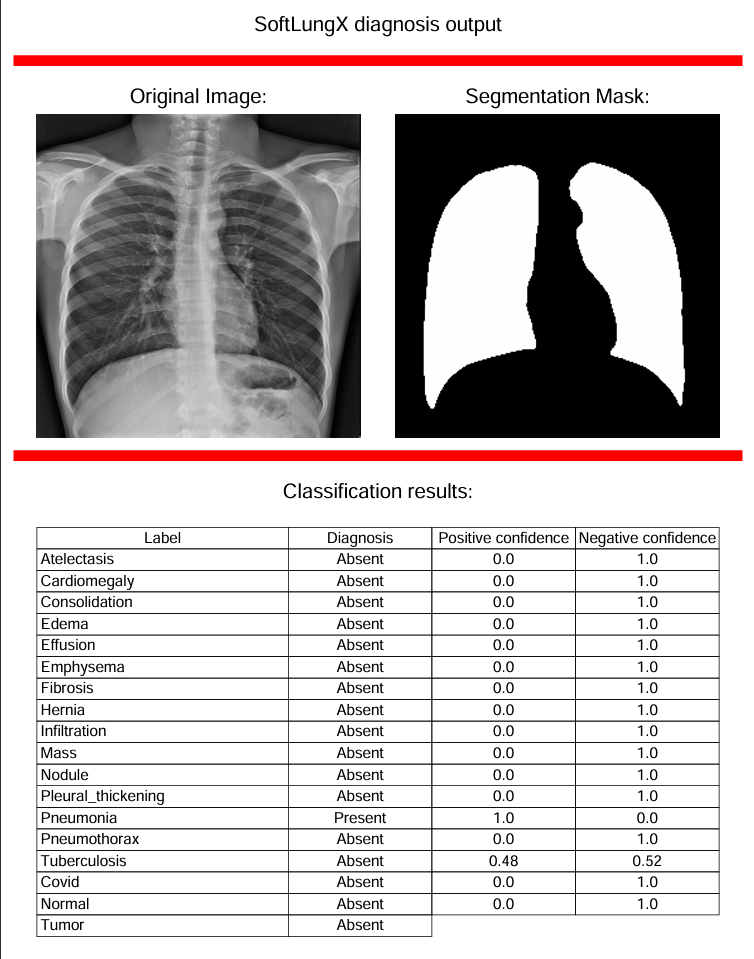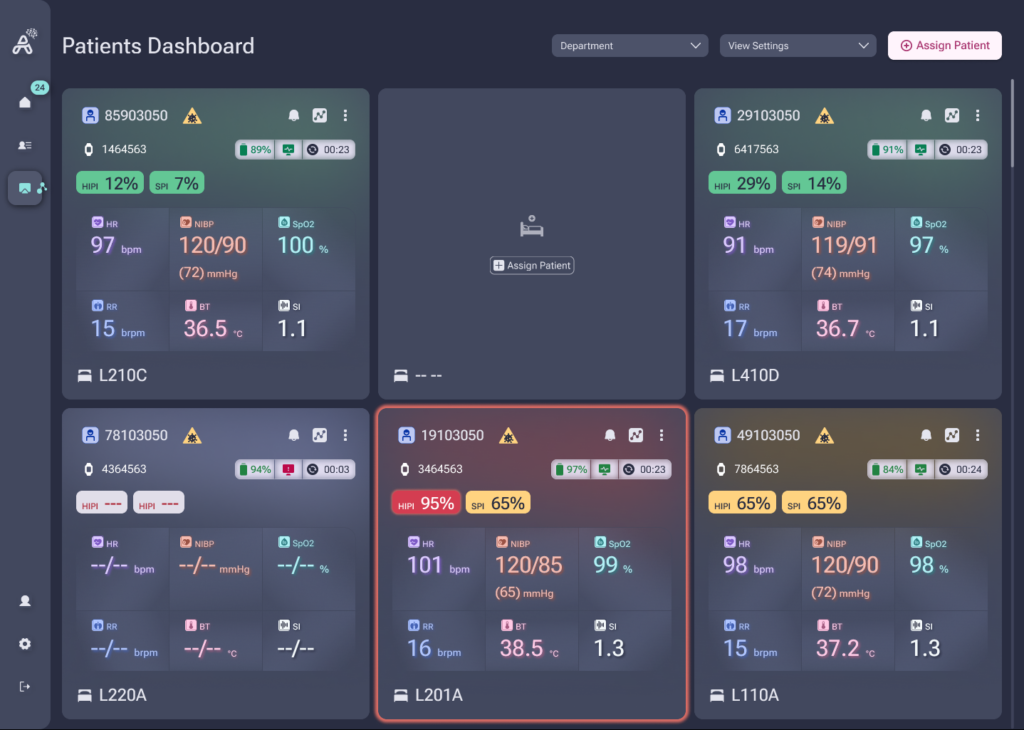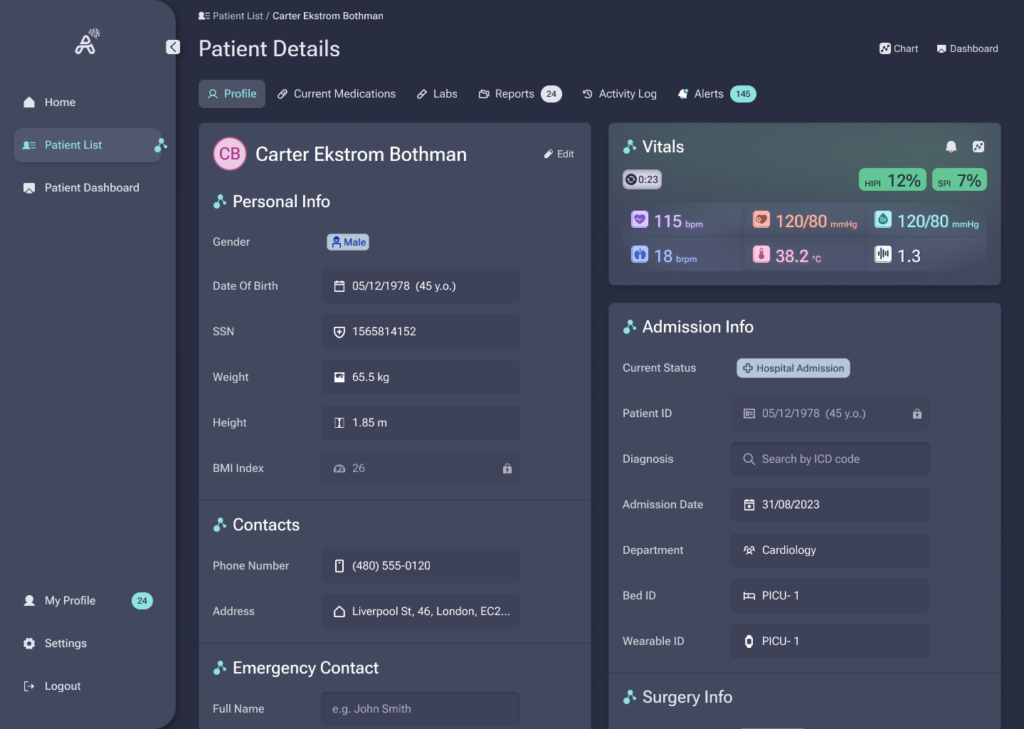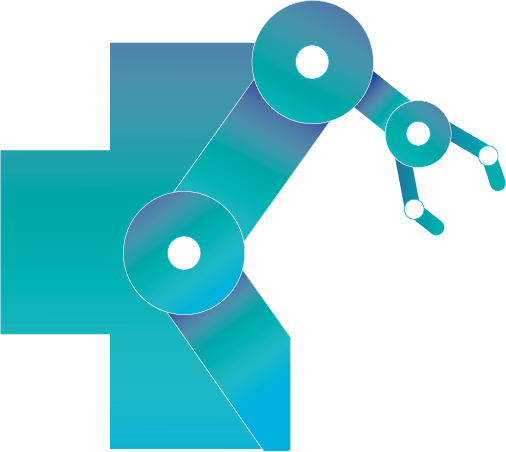It’s a wrap: Our Open Call 2 winner have completed the last phase of the HosmartAI programme
The third and last phase of the HosmartAI programme has come to an end. During 6 months, the 4 AI/Robotics winners developed, deployed and operated their pilots. This was the change to bring to live their work so far and see it perform in real life action.
The results of this third phase Assess matched the expectations, not to say they went beyond them.
We’re excited to present to you what’s been done and what’s in store for the 4 pilots.
What happened?
Heart bAlt:
“During this third and last phase we were able to improve the accuracy of the algorithm to 86%. This was possible due to a change in the algorithm itself but also due to the training done using RWD videos collected from patients.Also in this phase, we collected very insightful user feedback that helped us understand the impact and improvement points of the tool.
We are on the verge of achieving the mission we set ourselves to, which was to contribute to unleashing medical diagnosis from the boundaries of healthcare institutions.
By offering extraction of a range of health parameters, and support for various devices and operating systems, Heart bAIt eliminates the need for wearables or other dedicated hardware used for remote health monitoring, hence facilitating a first line of screening for heart rhythm diseases to large populations.”
SoftLungX:
“The SoftLungX decision support system solution achieved an average AUC of 0.935 and demonstrated comparable accuracy in classifying diseases (96.54%) and radiological findings (94.05%) without bias toward either. In addition, in 96% of the cases the system is capable of correctly identifying whether an anomaly exists in the X-Ray or not. In terms of segmentation reliability, the system is capable of correctly identifying lungs with accuracy of 95.6%. The impact of SoftLungX system is directly visible in affecting medical systems (hospitals and medical professionals) by increasing the speed and quality of diagnosis, thus impacting medical professionals and patients alike. Furthermore, the system has an impact on the academic and research fields in terms of newly acquired data and knowledge, as well as the economic aspect of both medical cost reduction and commercialisation.”

SoftLungX: Example of an output
VoiceAI:
“The VoiceAI pilot-project successfully implemented VoiceAI technology for depression screening in primary health care, achieving a 100% coverage of mental health screening for all patients, with a relatively high accuracy rate of over 70%, enabling adequate treatment for all patients in need. In addition, VoiceAI was shown to reduce the average time for mental health assessments by up to 4 minutes per patient, increasing work practice efficiency for healthcare providers, while improving personal experience during teleconsultations as reported by the patients. Furthermore, as the study was conducted in Italian, the VoiceAI pilot-project has demonstrated the language-agnostic feature of the AI system.”
SICS:
“SICS impact is multifaceted. By providing real-time AI-driven predictions, we aim to refine clinicians’ ability to address intraoperative hypotension. In terms of patient outcomes, our proactive approach not only can improve patient safety but also can mitigate surgical risks, contributing to expedited recovery times and abbreviated hospital stays. This, in turn, reduces healthcare costs through the prevention of complications and enhancement of surgical outcomes.”


SICS: Example of a patient dashboard and details
What were the results?
Heart bAlt:
The project achieved the goals they set in the beginning of the project:
– Innovative tool to screen Atrial Fibrillation episodes;
– Algorithm with a 86% accuracy and 87% precision;
– BYOD technology that allows for easy access with no additional costs;
Patient and doctor interfaces.
SoftLungX:
The pilot achieved several milestones providing a system that offers:
– the unified dataset used for model training (combination of publicly available databases); knowledge and experience on the implementation and efficiency of different multilabel classification and segmentation approaches;
– module for lung segmentation; module for pulmonary disease classification;
– software for pulmonary disease detection (segmentation + classification).
VoiceAI:
“The VoiceAI pilot-project demonstrates the validation of the utility of AI in managing patients’ mental health in primary care by highlighting positive outcomes in a large cohort of patients and physicians. This pivotal pilot-project lays the essential groundwork for regulatory approval and commercialization of the AI model.
– The project achieved 100% coverage of depression screening in primary care settings. This ensures that every patient receives a vital assessment and accelerates interventions for those in need, reducing monitoring time and workload for healthcare providers.
– VoiceAI’s ability to reduce the average assessment time by up to 4 minutes per patient increases both the efficiency and patient satisfaction of teleconsultations, reinforcing its impact on improving the overall efficiency of the healthcare system.”
SICS:
“The project managed to collect data from over 3000 patients and has been used for model training; achieved and surpassed this with robust data from 3000+ patients enhancing the model’s predictive power. Also, targeted hypotension prediction accuracy of over 90%. And finally, the models can be adapted and integrated into other medical monitoring tools beyond the SICS platform”
What are the next steps?
Heart bAlt:
“We have already started the efforts to support Heart bAIt’s follow-up. During the project, we applied for additional funding to execute the steps listed below:
– Optimization of the tool’s core;
– Continuous Data Collection for Algorithm Training;
– Collection of Ongoing User Feedback;
– Implementation on Interested Stakeholders;
– Finish a peer-reviewed publication;
– Iterative Deployment and Scaling.”
SoftLungX:
“SoftLungX system will continue to develop over time, taking into account the ever-growing database of lung disease related medical images and biomarkers. The system will make an attempt at being commercialised as a recognized medical tool for expert pulmonologists and radiologists, to be used in daily clinical practice. To ensure successful commercialization and daily clinical use, the SoftLungX team must adhere to and meet stringent regulatory standards, such as obtaining the CE mark and FDA approval. The plans for streamlining the diagnostic process and increasing user friendliness and overall accessibility of the system will be achieved by creating an online cloud-based platform which encompasses all SoftLungX capabilities without the need for manual installations, dependencies and on the spot maintenance.”
VoiceAI:
“The next steps of the project include scaling the VoiceAI integration at Medic4all-Italia to a larger number of patients and physicians, with the goal of increasing its impact and reach, and bringing the vocal biomarkers solution to other providers across Europe to test new patient cohorts and new languages. The team will also work on disseminating the pilot results to ensure transparency and knowledge sharing, highlighting the success and impact of the VoiceAI implementation.”
SICS:
“We are on a strategic path to pursue FDA 510(k) clearance, and the EU MDR CE mark, aiming to cement our system’s credibility and global reach. To amplify our presence, we plan to expand our outreach and engagement. Parallel to this, we seek to develop partnerships with leading medical technology companies, which will be crucial for integrating our solution and achieving wider market penetration. By integrating prospective data collection at select trial sites, we aim to enrich our dataset, which will refine and improve our predictive models. By leveraging insights from this expanded data analysis, we will further improve our system’s accuracy and reliability, underpinning our commitment to innovation in healthcare technology. Finally, we need to improve the interpretation of different unfiltered data streams.”






